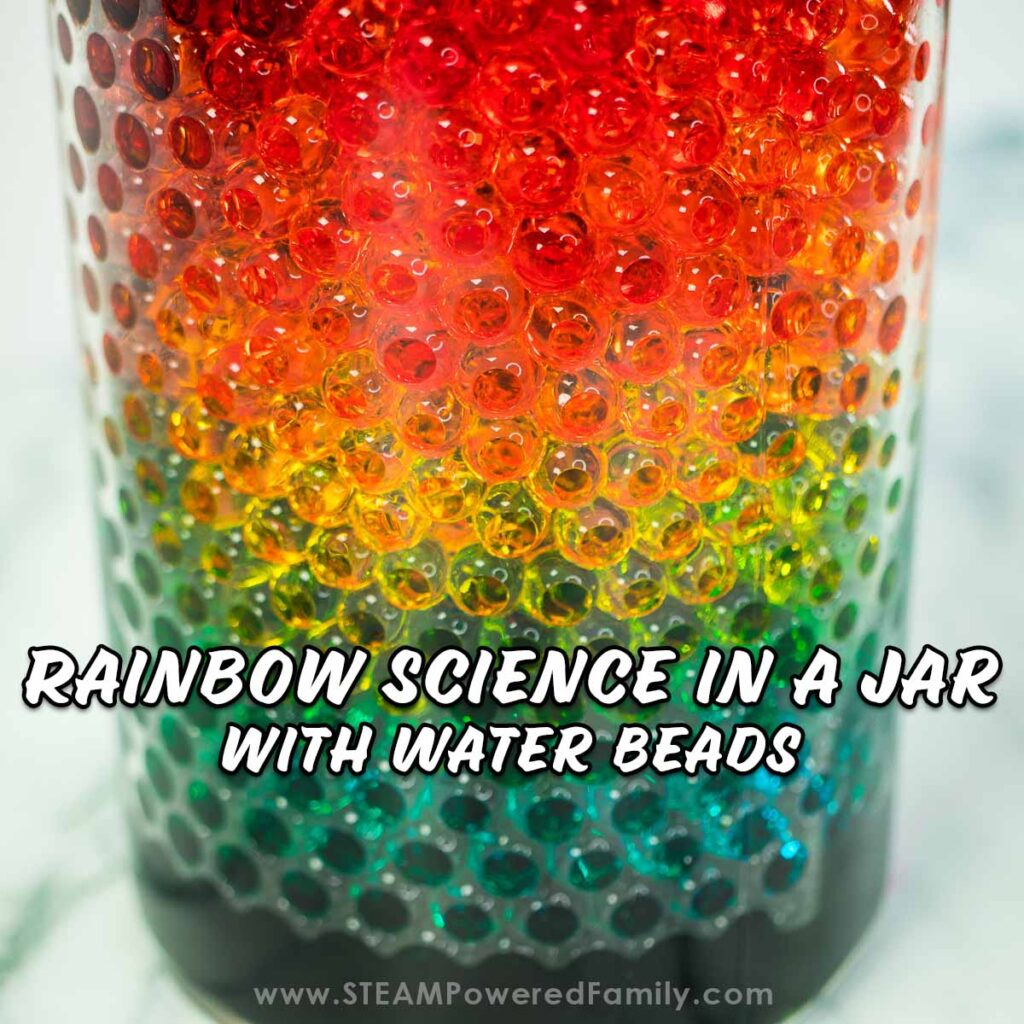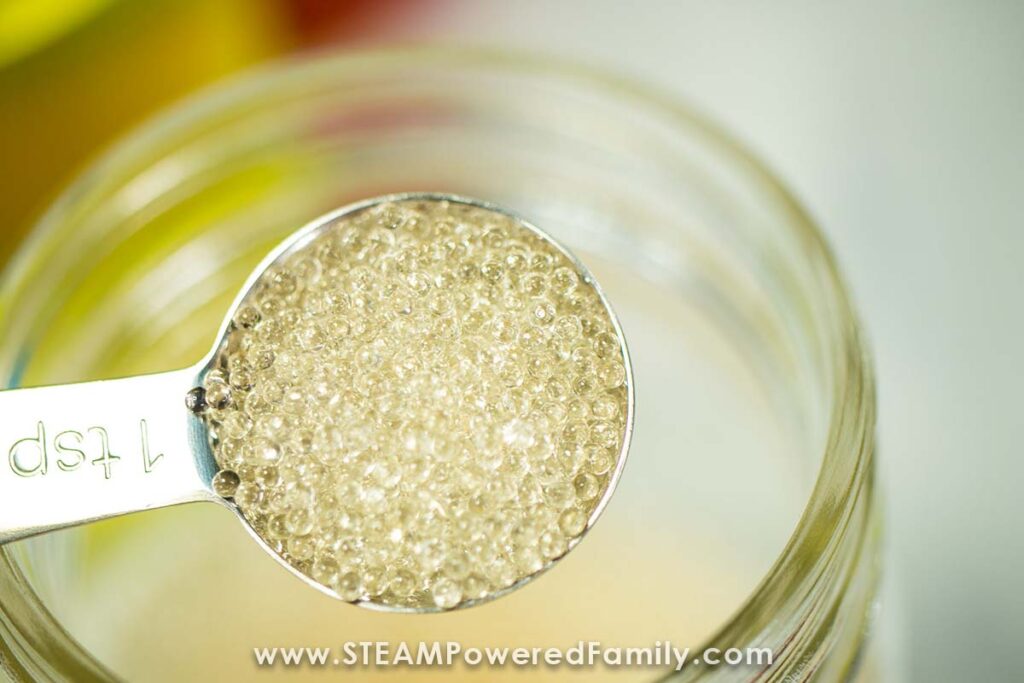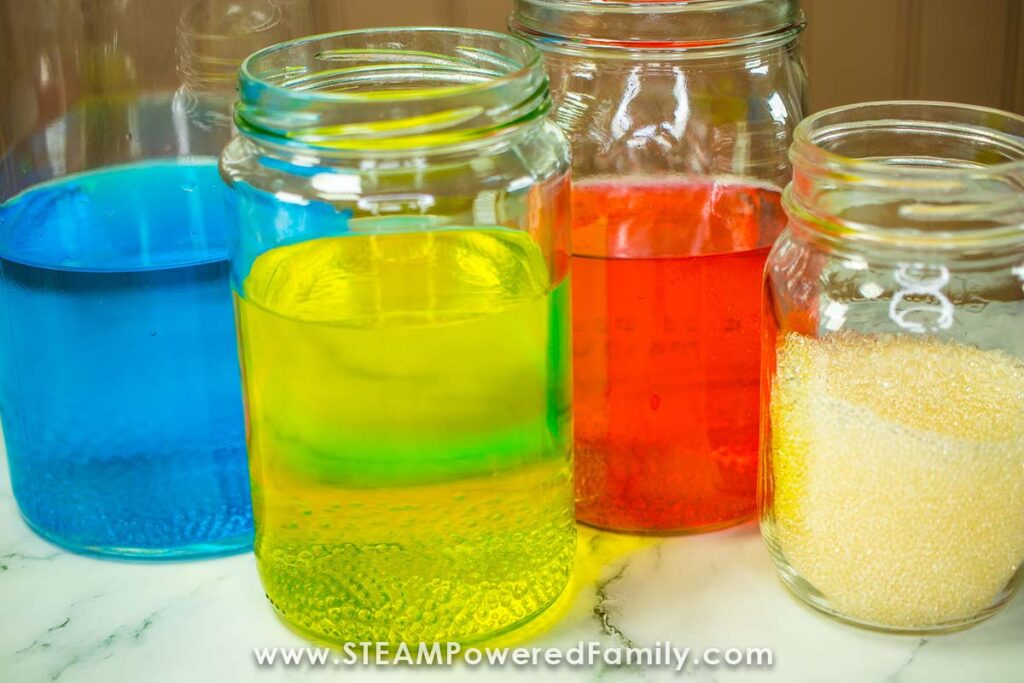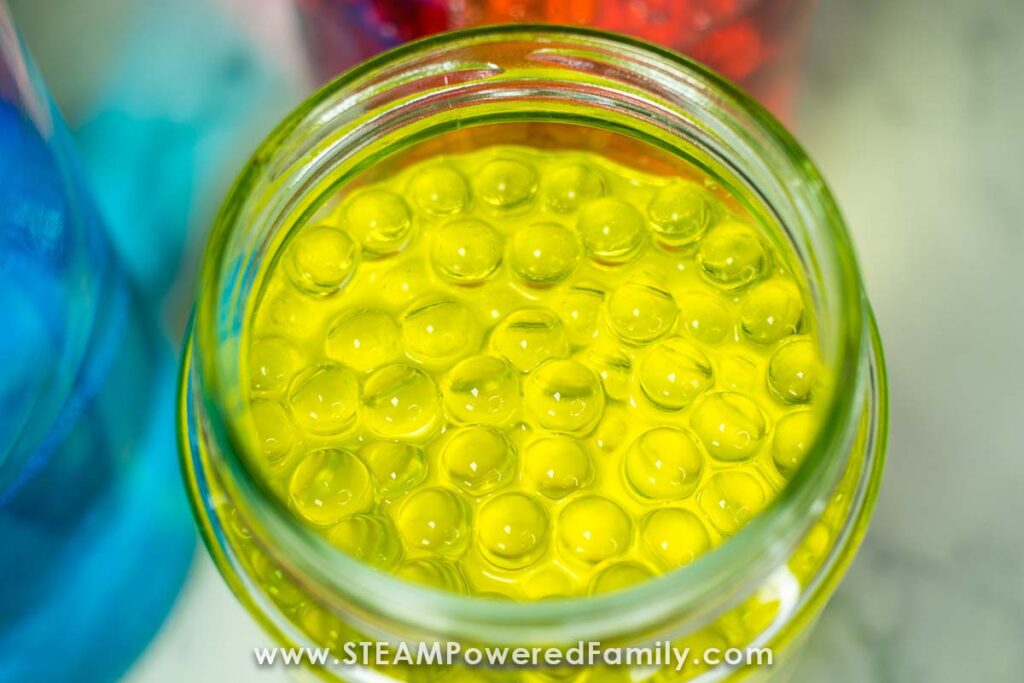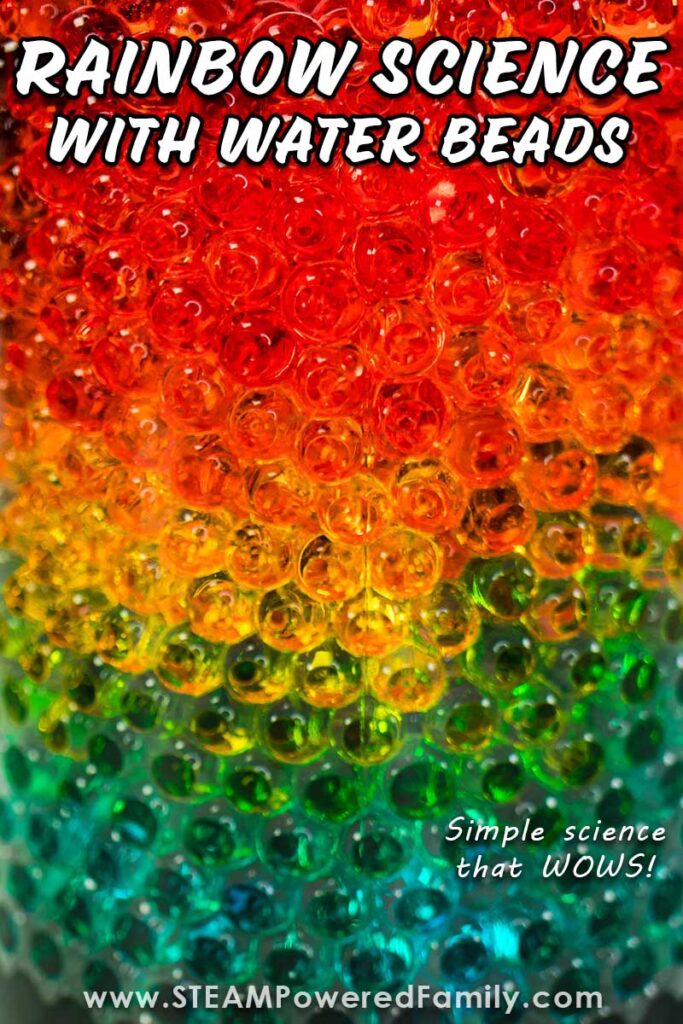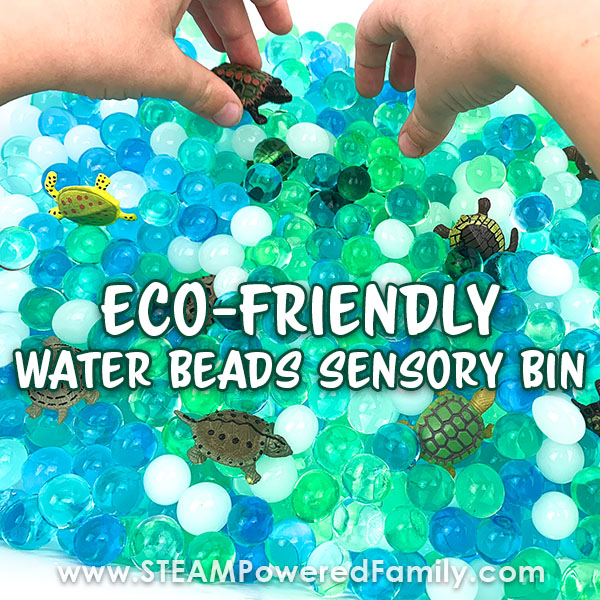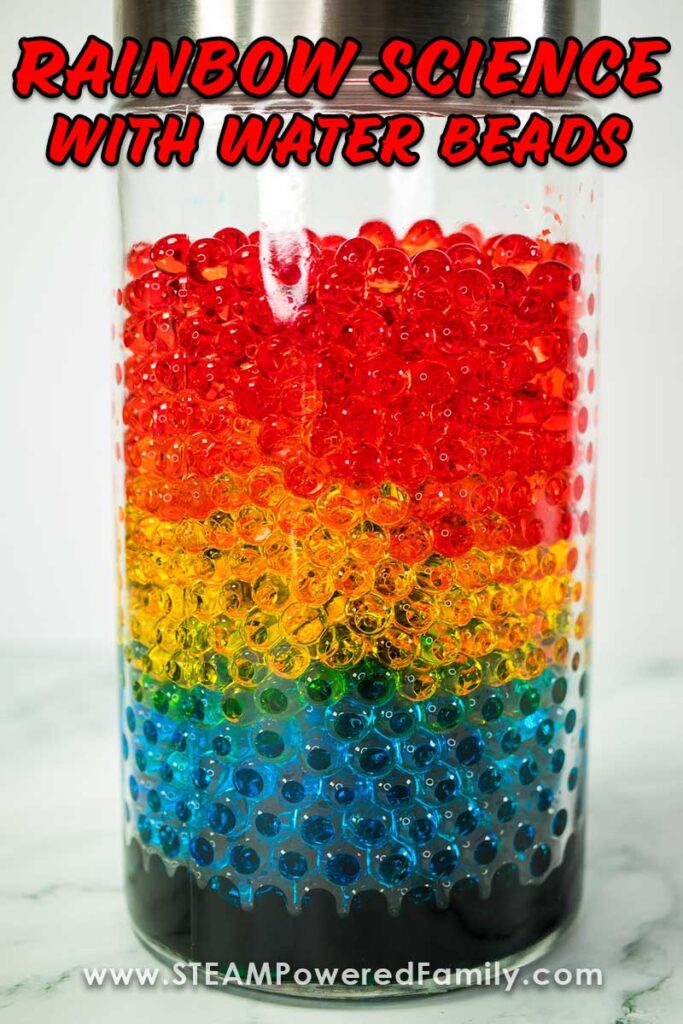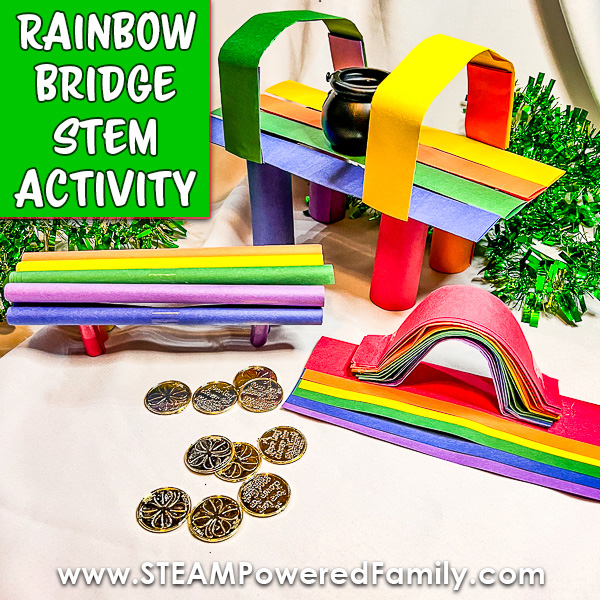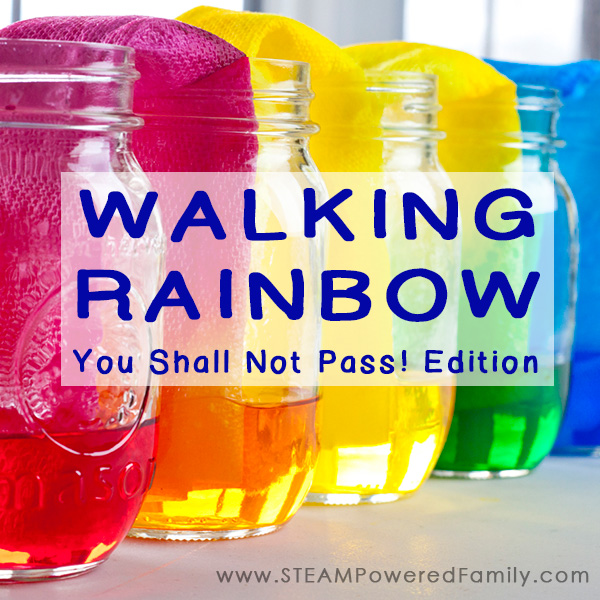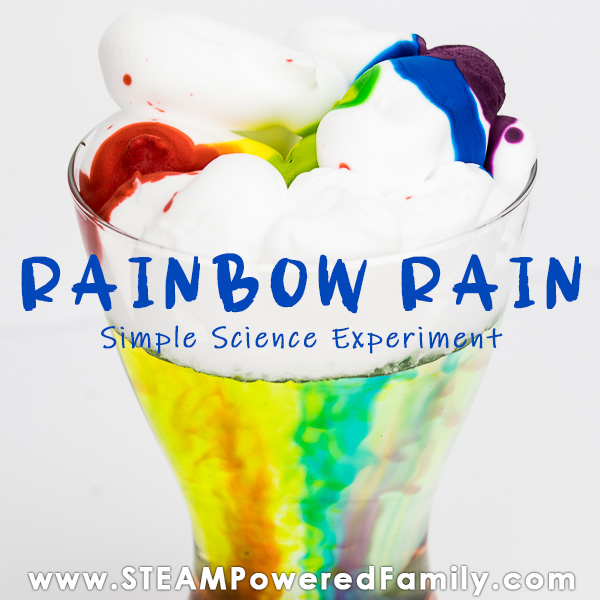Rainbow Science with Water Beads
There is something incredible about a rainbow. The magical colours that appear in the sky always bring on a sense of awe. So today we are capturing that magic with a rainbow science experiment, where we capture a rainbow in a jar using water beads. This is a simple science experiment that is perfect for young scientists.
Rainbow Water Beads Experiment
Disclaimer: This article may contain commission or affiliate links. As an Amazon Influencer I earn from qualifying purchases.
Not seeing our videos? Turn off any adblockers to ensure our video feed can be seen. Or visit our YouTube channel to see if the video has been uploaded there. We are slowly uploading our archives. Thanks!
Experiment Video Tutorial
You can watch a video tutorial of this activity here. If you can’t see the video, please turn off your adblockers as they also block our video feed. You can also find this video on the STEAM Powered Family YouTube Channel.
What are Water Beads?
Before we begin we should start by explaining exactly what water beads are and how they are used. Water beads come as really small, tiny beads.
When you soak them in water they grow to many times their original size and become gel-like beads or orbs. They are also known as water crystals, gel beads, jelly marbles, or hydrogel beads.
Water beads are typically made from a superabsorbent polymer material, which is a type of polymer that can absorb and retain many times its weight in water. For our purposes, it is also important to note they they also absorb and retain food colouring from the water as well. This process is called osmosis.
Learn more about the fascinating science of polymers.
Originally hydrogel beads were created to help farmers and gardeners keep soils moist for optimal crop and plant growth. However, as people realized how pretty they were, they started using water crystals for decorative purposes and in vases with flower arrangements (where they provide water for the flowers and look pretty in a glass container).
But for our purposes, the best part of water gel beads is that they are incredibly fun for sensory play and learning activities! We made a really fun Water Bead Sensory Bin that kids love. They are slippery, squishy, and a lot of fun. Plus, like what we are doing today, you can use them for science.
SAFETY NOTE – Water beads for kids and pets
It is important to note that although water crystal beads are non-toxic, they pose a significant choking hazard and should never be used with children who may try and put them (whether dry or wet) in their mouth. Additionally, if ingested, they can cause serious harm to both humans and pets. If you are doing this with your class, please ensure all students are aware of the safety rules and will follow them at all times. Never use beads for sensory play with children that may put them in their mouth. Adult supervision is required at all times.
Are Water Beads Biodegradable?
Since hydrogels were designed for use in farming, they are biodegradable. This means that once you are done playing or doing science with your water beads, you can work them into your garden or simply dispose of them in the bin.
Rainbow Science Water Beads Experiment
So now we know a bit about water crystal beads, let’s do some beautiful science and capture that rainbow in a jar!
To start we need to make our crystal orbs!
You will need:
Clear water beads
Food coloring (red, blue, yellow)
Large jar
Mason jars
Water
Optional – Large test tubes – This is great if you want to make mini rainbows for your students to take home.
Directions
The instructions for water beads are quite simple, for every 1 tsp of dry beads add 3 cups of water. Then let them soak for at least 4 hours. We left ours overnight.
For our rainbow science we need to add one extra step. You will need 3 large mason jars. Place 1 tsp of clear water beads in each jar, then add 3 cups of water. Now in the first jar add red food coloring. In the second add blue food coloring. In the third add yellow food coloring.
Pro Tip! For the most vibrant rainbow, you need to use a lot of food coloring. I added about 30 drops to each jar.
After about 4 hours (or leave them overnight like we did), your water gel orbswill be at full size.
Using a simple strainer, remove excess water from each of the jars. If you don’t think your beds are vibrant enough, you can cover them with water again, and add even more food coloring.
Science time!
Now the water beads are ready, it is time for the really cool science!
In a large jar that is big enough to hold all the beads, pour the blue water beads in first.
Then pour in the yellow water crystal gels.
Finally, pour in the red gel beads!
Now watch closely. You will start to see changes fairly quickly, the colours will start to blend and form a rainbow – red, orange, yellow, green, blue and purple. Rainbow science, so cool!
The best part is that the rainbow will stay for many days. Mine has been sitting on my windowsill, where it looks amazing with the sunlight coming through the jar. It has been there for 4 days and I still have my rainbow. I did place a lid on the jar to seal it and prevent evaporation.
Classroom Tip
If you are doing this for a classroom and want the students to be able to take home a rainbow, place some of each colour in a large test tube for each student. Just make sure you follow the order in every test tube: blue at the bottom, yellow in the middle, red on top.
How to Dispose of Water Beads
Once you are done doing your science experiment, you can use these biodegradable orbs in your garden to help maintain moisture levels. They would also be perfect in a sensory bin, like this ocean themed one we made, but instead make a rainbow themed one.
Or you can set the beads on paper towels and let them dry out completely. Once they are dry, they can be stored in an airtight container until you are ready to use them again.
Extension Idea
We did a really cool experiment in the past using food colouring and flowers. What would happen if you put some flowers in our rainbow water beads? Inquiring minds want to know! So that might be our next experiment. Always fostering curiosity!
This Rainbow Science in a Jar using Water Beads is simple science that kids will love! Best of all, you can keep your rainbow in the classroom for everyone to enjoy for days, or use the beads in a sensory bin, or dry them to use for a future project.


